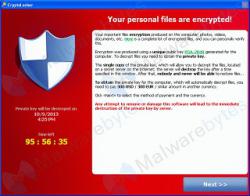Ransomware Delivered by Phishing Emails
Posted by: Timothy Weaver on 06/07/2016 09:40 AM
[
 Comments
]
Comments
]
In a report conducted in March by PhishMe, 93% of phishing emails contain ransomware.
 What is worrisome is that the study found 6.3 million phishing emails in Q1 2016. What that amounts to is an increase of 789% from the previous three months.
What is worrisome is that the study found 6.3 million phishing emails in Q1 2016. What that amounts to is an increase of 789% from the previous three months.
46% of IT personnel stated that their company was compromised by malware, including phishing, ransomware, DDoS, APT, or other attacks.
PC Pitstop CEO Rob Cheng said: “The security problem is getting consistently worse, the consequences are getting consistently larger, and the frequency is growing.”
Although the number of phishing emails has increase, it is spear phishing that is proving most productive for the hackers.
ZapFraud CTO/founder Markus Jakobsson said that targeted attacks “can net millions, instead of thousands,” and he noted that they “can be far more devastating.”
“One of the biggest concerns is the continued automation of targeted attacks,” Jakobsson said. Criminal groups are scraping the web to determine which companies do business with each other, and use that information to generate targeted phishing emails “all without an actual person doing the work.”
Source: SCMagazine
 What is worrisome is that the study found 6.3 million phishing emails in Q1 2016. What that amounts to is an increase of 789% from the previous three months.
What is worrisome is that the study found 6.3 million phishing emails in Q1 2016. What that amounts to is an increase of 789% from the previous three months.46% of IT personnel stated that their company was compromised by malware, including phishing, ransomware, DDoS, APT, or other attacks.
PC Pitstop CEO Rob Cheng said: “The security problem is getting consistently worse, the consequences are getting consistently larger, and the frequency is growing.”
Although the number of phishing emails has increase, it is spear phishing that is proving most productive for the hackers.
ZapFraud CTO/founder Markus Jakobsson said that targeted attacks “can net millions, instead of thousands,” and he noted that they “can be far more devastating.”
“One of the biggest concerns is the continued automation of targeted attacks,” Jakobsson said. Criminal groups are scraping the web to determine which companies do business with each other, and use that information to generate targeted phishing emails “all without an actual person doing the work.”
Source: SCMagazine
Comments






